🌄 A Note From Malealea Lodge — Updated for 2025 Where slow travel meets modern comforts in the Heart of Lesotho Since Marek wrote the beautiful story below about his stay at Malealea Lodge in February, 2025, a few things have changed here in the mountains — all for the better. ⭐ We’ve upgraded our entire internet system to Starlink, bringing: • Free Wi-Fi for all guests • Very high-speed connectivity —...
The Origin and History of the Basotho Pony
We were invited to capture these powerful images of Basotho horsemen on their way to a funeral — a deeply moving procession steeped in culture and respect. Each man is dressed in traditional Basotho attire, wearing their iconic mokorotlo hats and distinctive wool blankets that tell a story of identity, heritage, and pride.
It was a true privilege and honour to witness this moment of unity and tradition on horseback, set against the breathtaking Lesotho landscape in the Malealea Valley.
Following this invitation, I thought it would be fitting to explore the history of the Basotho Pony. This extraordinary breed, renowned for its endurance and sure-footedness, descends from the Cape Horse—a blend of Arabian, Persian, and Barb bloodlines brought to southern Africa by European settlers in the 17th century. Through centuries of trade, conflict, and adaptation to Lesotho’s rugged terrain, the Basotho Pony evolved into a tough, agile, and dependable mount. By the late 19th century, it had gained recognition as a prized warhorse, particularly during the Anglo-Boer War.
Today, you can experience the strength and spirit of the Basotho Pony firsthand on our Malealea Pony Trekking Adventures, offering everything from single-day rides to immersive six-day journeys through Lesotho’s breathtaking mountains. Whether you’re seeking a short ride or a multi-day expedition, our ponies will guide you deep into the heart of this unspoiled landscape.
Ready to ride? 🐴✨
Book your adventure today and discover Lesotho like never before!
THE ORIGIN AND HISTORY OF THE BASOTHO PONY - THORNTON 1936 ADDENDUM: FITZSIMMONS 1973
In order to arrive at the origin of the renowned Basotho Pony it is essential to trace the origin, development and subsequent decline of what was known as the "Cape Horse", which formed the foundation stock on which the once famous Basotho breed was founded.
THE CAPE HORSE
INTRODUCTION
The history of the Cape Horse may be conveniently divided into three periods:-
a) From the first importation in 1652 - 1811. Throughout this period practically all the animals imported were what has been described as oriental stock.
b) From 1811 - 1850 high class Blood horses and Thoroughbreds were imported.
c) From 1850 and particularly from 1870 - 1885, many inferior thoroughbreds were imported, which was one of the causes, amongst others described later, that brought about the decline of the Cape Horse.
DETAILED HISTORY OF IMPORTATIONS
Horses were first sent out to the Cape by the Dutch East India Company in 1652, but owing to bad weather they were landed at St. Helena and only reached the Cape in 1655. They were Java horses of a strong Persian and Arab strain. The Aborigines of the Cape saw horses for the first time in 1653, when four Java horses were landed after and extremely dangerous voyage.
In 1659 the Government agreed to Jan van Riebeck's request to send two horses from the East with every home-bound fleet. These were of the same stock as those previously imported in 1653 and 1655. In 1689 Simon van der Stel imported good stud horses direct from Persia, of which the farmers made good use. By this date horse breeding was firmly established, and we may claim for the Cape Horse an origin similar to that of the English Thoroughbred, viz:- mainly from the noblest strain of all warm blooded horses "the Libyan of North Africa" - through its Arab, Barb and Persian types. The animals were small but hardy and had excellent constitutions and temperaments.
In about the year 1778 several horses of Andalusian origin, a Barb and Arabian cross - were imported from South America. This was only another infusion of oriental blood from a different source; they were very good specimens.
The first eight stallions were imported from England in 1782, they were what was then known as "English Blood Horses" descendants of renowned oriental sires. In the same year five stud horses were imported from Boston, U.S.A.; they were derived from the Barb through the Andalusian horses of Spain, the English Blood Horse, Utrecht and early Dutch horses.
From 1795 - 1803 several excellent English stallions were imported and these brought improvement and development to horse breeding at the Cape. In 1807 some Spanish breeding horses were captured and land at the Cape. They were described as blue roans and red roans of medium height, broad chested and possessing great powers of endurance.
In 1808 a number of horses and mares, said to be of good Eastern and Spanish blood, were imported from the New England State of America. During the years 1811 - 1820 Lord Charles Somerset, the then Governor of the Cape, purchased in England, for the Cape, eighteen stallions and tow mares. The majority of these had lengthy pedigrees going back to the great oriental founders of the Thoroughbred. Sic died on the way out but many of the remainder and their progeny became famous. The colonists were so pleased with the Governor's excellent scheme of using the Thoroughbred to ennoble the Cape country-bred that the importation of good stallions continued and the decade 1820 -1830 saw many notable sires reach the shores of South Africa.
During the years 1840 - 1850 several stallions, which had stood at stud in England and are to-day mentioned in the pedigrees of famous winners, were imported, also several younger stallions and mares. Thus 1811 may be said to mark the beginning of the reign of the English Thoroughbred at the Cape which lasted for half a century, during which period the Cape Horse reached its zenith.
It is necessary here to impress the fact that up to 1811-1812 the Cape stock was almost entirely of oriental origin, and that the importations to the Cape from England prior to 1810, especially during 1770 -1790, included many of the sons and daughters, descendants of the first three great English sires bred from three great oriental sires viz:-
Herod (1758) best descendant of Byerly Turk (1689).
Matcham (1748) best descendant of Godolphin Barb (1728).
Eclipse (1764) best descendant of Darley Arabian (1706).
The blood of these sires and mares made it possible for the Arab stock of the Cape to reach its zenith under the patronage of Lord Charles Somerset and the great Hantam breeders. There is no doubt that the blood of these great progenitors of the Thoroughbred was possessed in a large measure by the horses that entered Basutoland in 1830 -1850. We like to mention these illustrious ancestors and the dates of the Thoroughbred, and through the Thoroughbred of other famed breeds such as the Saddler and the Trotter, U.S.A. and the Hackney because contemporaneously and from the same sources were created the Cape Horse and the Basuto Pony, whose achievements in trying campaigns as remounts, on race courses and polo grounds, proved their relationship and equality to the world's best light horse stock. From 1850 - 1860 the quality of Thoroughbreds imported was not quite as good as that of the former importations. From about 1860 a period of calamitous decline set in due to a number of causes, amongst which the principal were:-
a) The farmers in their zeal for long pedigrees imported, particularly during the years 1870 - 1885, several hundred horses of poor type known subsequently as "blood weeds".
b) Severe visitations of horse-sickness which depleted the ranks of the original magnificent foundation stock (1854 - 1870).
c) The advent of Angora goat farming 1840, ostrich farming in 1860 and a rapid extension of the production of woolled sheep, had the effect of largely changing the system of farming to the detriment of horse breeding throughout the greater part of the settled area of South Africa.
d) The opening of the Suez Canal (1868) resulted in a loss of trade - particularly the remount trade. This factor tended to depress the horse market, with the result that farmers had to reduce expenditure on horse breeding and turned to other lines of farming, as mentioned under (c).
The foregoing factors brought about great deterioration, and the Cape Horse never again reached the high, general standard that it attained in the years 1810 - 1870. Several good horses as well as the "blood weeds" were imported during this period, amongst which were eight very good Hackneys and one Norfolk Roadster landed in 1888, but these had little of no effect in stemming the decline that had set in. Efforts have since been made by successive governments, private individuals and companies, to improve the general stock of the country but lack of interest, unintelligent cross-breeding, heavy losses incurred during the Anglo Boer War, and later the arrival of the motor car and other factors, have, made the attainment of this object on a general scale extremely difficult. Having briefly recorded the ancestry of the Cape Horse it is now necessary to trace the connection between this type and what subsequently became known as the Basuto Pony.
HISTORY OF THE BASUTO PONY
FIRST STAGE
For many decades the tract of land now known as Basutoland and the adjoining country now the Orange Free State, was sparsely inhabited by bushmen, and later more thickly populated by Suto-Chuana Bantu tribes from the north, east and west of Southern Africa. The comparative peace which these tribes had enjoyed for probably a couple of centuries came to an end when the Zulu invasions began early in 1822. It was during this period of invasions, wars and general trouble, which lasted for many years, that the tribes saw and procured horses for the first time, and it was the remnants of these tribes which were later gathered together by Moshoeshoe and welded into the Basotho Nation.
In 1825 the Bataung of Moletsane made a successful counter attack on a band of roaming Griquas who had come to raid them, and acquired, amongst other booty, a few horses, as it is recorded that in 1827 they captured much booty including horses from a band of Korannas who were in search of plunder.
In 1828 a band of Korannas, in an attempted attack on the stronghold of Chief Mohale in the Maseru district, was defeated, and Mohale captured and retained all their horses. About 1825, Moorosi and his people, the Baphuthi, with certain bushmen adherents, became vassals to Moshoeshoe. The Zulus had captured all Moorosi's cattle and destroyed his crops, and to replenish his herds he had for some years afterwards to make repeated raids into Kaffraria in order to acquire further cattle. His bushmen followers, in a raid about 1829, stole two horses from a farm near what is now the town of Dordrecht. One of these Moorosi presented to Moshoeshoe. This was the first horse owned by the great Chief, and history records the fact that, with little or no equipment and after many struggles, he learned to ride. After acquiring the art of managing and riding a horse he apparently lost little time in securing further equines, as in 1830 we hear of him going to see an old friend accompanied by twenty three young men on horseback.
In 1833 Moshoeshoe's eldest son received with delight his first gift horse from his father.About 1830 the aggressive Korannas, previously mentioned, made an attack on a Mophuthi named, Lipholo and on a Mosuto living on the site of what is now Masitise Mission Station in the Quthing district. Moorosi counter attacked, captured and brought back, amongst other plunder, sixteen horses. Shortly after the attack on Lipholo, just mentioned, a band of Korannas planned an attack on Chief Moorosi's stronghold - Thaba Bosiu. The chief hearing of this forestalled them and became the attacker, with such successthat he killed practically everyone and returned with much spoil including many horses.
After their encounter with the Bataung in 1827 the Korannas, who were now raiding many parts of the Suto-Chuana country, attacked the Zulu invaders, the Amangwane, near Clocolan Hlohloloane). The latter fought bravely until they saw a Koranna on horseback - the first they had seen - and they fled in abject terror. A similar misfortune overtook the Baphuting. They had, many years before, moved away from their homes in Wetsi's Hoek and after wandering long and far afield attacked the Bahlaping near Kuruman. After a time a mounted force of Griquas came to the aid of the almost conquered Bahlaping and the Maphuting, seeing this fearsome spectacle, fled. From the foregoing account it will be seen that the majority of the horses, procured by the tribes living in what is now Basutoland and the Free State up to the year 1835, were taken from the Griquas and Korannas in turn had obtained these by raids and thefts from the Cape Farmers (on the borders of the Orange River), aided by their allies, the bushmen, who had become expert thieves and raiders as they resented European farmers settling at their fountains, thus driving away the game. For these thefts and other reasons the bushmen were hunted in much the same manner as wild animals by the farmers.
At this point in the history of the Basotho Pony it is necessary to refer back to the history of the Cape Horse, from which it will be seen that up to 1811 the Cape Horse may, for practical purposes, be regarded as for purely oriental descent, and that the Thoroughbred importations from 1821 - 1835, for which Governor Somerset and private individuals were responsible, were splendid animals with a very large admixture of oriental blood. the foundation Basuto stock was, therefore, almost, if not entirely, purely oriental, and it is doubtful whether even the later introductions up to 1835 carried much thoroughbred blood, as it must have taken many years after Governor Somerset imported this Arab foundation Thoroughbred, for the blood of theses animals to have reached the horses taken from the Korannas and Griquas by the Basuto. It may, therefore, be fairly safely assumed that up to 1835 about 90% of oriental blood flowed in the veins of the Basuto Pony.
SECOND STAGE
The Maphetla and Mapolane, two of the earliest tribes to inhabit South Basutoland - related to the Baphuthi who gave Moshoeshoe his first horse - suffered many and various disasters as a result of war and famine; and finally, towards the end of 1822, the survivors journeyed to the Cape Colony, as far south as Somerset East, for protection and to secure a livelihood by taking service with the farmers under the supervision of Sir Andries Stockenstroom. After some years they returned to Basutoland in 1836 with the stock they had earned, which it is said included a number of horses.
The Batsueneng, after a fierce battle with the Griquas, were slaughtered to such an extent that they ceased to exist as a corporate tribe like the Maphetla and Mapolane already mentioned. Most of the survivors went to work in the Cape Colony but returned to Basutoland in 1836 and 1837 with horses and other stock. In the early part of the nineteenth century the great Zulu Chief, Moselekatse, exiled from Zululand and subsequently the founder of the Matebele Nation, with the aid of his regiments (impis) over-ran and laid waste a great part of what is known as the Orange Free State. He attacked whoever opposed him, including later on the Boer Farmers. In a counter attack against the forces of Barend, Barend composed of Bergenaars, Griquas, Korannas, Barolong and Bahlaping in 1830 Moselekatse recaptured all stock etc, which had been taken from him and also secured many horses. This state of affairs naturally led to ever increasing trouble as the Boers, who had begun to appear in the country in 1835, captured many cattle form Moselakatse’s people, with the result that he attacked them twice in great force in 1836 on the banks of the Vaal. On these occasions the Boer farmers suffered many casualties, and Moselekatse captured horses and other spoils.
It is thought that many of these horses came into possession of the local tribes during this period, which was one of raids and counter raids between these tribes and Moselekatse before he departed for the North with his marauding impis. He also attacked Chief Moshoeshoe at Thaba Bosiu in 1831, but was worsted, and that great Chief, who was also a great Statesman, treated Moselekatse so generously on this occasion that he was never again molested by him. In addition to the attack on Thaba Bosiu just mentioned, the local tribes, many of whom were vassals of Moshoeshoe, had for some years been invaded and attacked, again and again, by the Zulus, Korannas, Griquas etc., and in 1835, to add to their difficulties, Boer farmers began to arrive amongst these much harassed people. At first these farmers came for short periods only, but later their visits became prolonged. They brought with them their flocks and herds which included numbers of horses. These newcomers, unlike the Zulus who were marauders and a passing phase, had come to stay. This occupation resulted in further wars, raids and counter raids, in which much stock, including horses, changed hands. Later on, after the Orange Free State had become finally occupied by these European emigrants from the Cape Colony, and particularly after the wars between the Europeans and Basuto ceased, the local people were, as is the case to-day, largely employed by the emigrants as farm labourers and were paid for their labour in stock. Many horses were acquired by the Basotho in this manner.
Owing to the more settled conditions now established, European livestock speculators came into the picture of the Basotho pony for the first time. These men, knowing even at this early date, that the Basuto, were a sporting race and consequently anxious to acquire as many good horses as possible and prepared to pay handsomely for them, obtained droves of horses which they took to Basutoland and exchanged for cattle. In this way large numbers of horses found their way into the Territory, amongst them many good stallions which it is thought were not always acquired in an honest manner.
The horses which entered Basutoland from 1835 to 1840, during the second period of the origin and history of these animals, were mostly of excellent oriental blood with possibly a slight infusion of Thoroughbred from the earlier Thoroughbred importations into the Cape. From 1840 to 1870, by fair or foul means, horses continued to find their way into Basutoland, and these later importations must have had a greater proportion of Thoroughbred blood in their veins than was the case of the 1835 to 1840 importations. But whatever the proportion of Thoroughbred in these later importations it could not, diffused as it was, have made a great deal of difference to the preponderating oriental blood already in the country.
By 1870 it is recorded that practically the whole Basotho nation was mounted. This fact, as will be shown in the third stage, is thought to be the most important in the history of the rise to fame of the Basotho Pony.
THIRD STAGE
It is a peculiar point of interest in the history of Basutoland and its people that the unfortunate war of 1879, between the Allied Cape Colonial and Basuto troops against Chief Moorosi, who lived in the Quthing district, arose out of Mr. Hope’s judgement on Chief Moorosi’s son for the theft of some horses.
The year 1870, as previously mentioned, is regarded as the most important in the history of the Basuto Pony. Practically the whole Nation was mounted, and, for this reason, the tide turned from import to export. Mr. W.H. Surmon in his report dated 6th July 1885, mentions the fact that in 1875, when a census was taken, the horse population int he southern part of Thaba Bosiu district was 8,000 and that the numbers increased considerably during the succeeding 10 years. There are two reasons fro regarding the turning point from import to export as the most important in the history of the Basuto Pony. It will be remembered that in the history of the Cape Horse the year 1870 marked the beginning of the decline of those renowned and valuable animals, due to the importation and use of large numbers of :blood Weeds” and the other causes mentioned int he notes given earlier on the Cape Horse. Had Basutoland at that time not reached saturation point in imports. this detrimental blood would have entered Basutoland and caused a similar decline. This purely fortuitous coincidence of the importation of :blood weeds” to the Cape, and import saturation in Basutoland in the year 1870, cannot, therefore, be too strongly stressed, as it marked:-
a) Practically the cessation of import, which fact prevented the entrance of the “blood weed” stock.
b) The commencement of export, which fact brought the merits of the Basuto Pony to the notice of Europeans.
From 1870 onwards the Basuto Pony as a type or breed began to be known amongst Europeans, and as export grew, its fame spread throughout South Africa and finally, during the Anglo Boer War, throughout the Empire.
Another cause of the decline of the Basuto Pony, reported during this period, was intense jealousy amongst the people. A man it was said would often castrate his best colts rather than stand the risk of his neighbours deriving benefit from them as stallions. It is not thought, however, that this could have been a serious obstacle to improvement, otherwise the improvement and maintenance of the breed at a high standard in the earlier stages of horse breeding would have been impossible. It will thus be seen that the Basuto Pony was steadily rising to fame during the period 1870 to 1903, and that during the same period the fame of the Cape Horse was steadily declining. There is no doubt that the Basuto Pony, like the once famous Cape Horse, became a definite and well established type due to it’s origin. Its conformation, character, paces, action and high powers of endurance were typical of its Eastern ancestors. In the case of the Basuto Pony certain characteristics became accentuated due to the nature of the country in which it was bred and the manner in which it was handled by its owners.
Basutoland is the most mountainous and coldest part of South Africa. The Basotho are fast and fearless riders but may be described as poor horse masters: shelter and food other than that supplied by nature are seldom considered. A Basotho pony was and is galloped up and down precipitous mountains where any other horse and its rider would fear to proceed at a walk. This treatment, together with the climatic and topographical conditions, tended to increase and accentuate the inherited characteristics, viz:- the small six, endurance, etc of these animals, which were already fearless and surefooted of any known type of breed; in fact even the mountain bred mule, known the world over for sure- footedness, can hardly be compared with these ponies, because the mule, unlike the horse, lacks courage and trust in its owner to face almost impassable conditions, viz:- rivers in flood, rock ledge trails etc.
The Basotho Pony, as previously stated, rose to the zenith of its fame during the Anglo Boer War (1900).
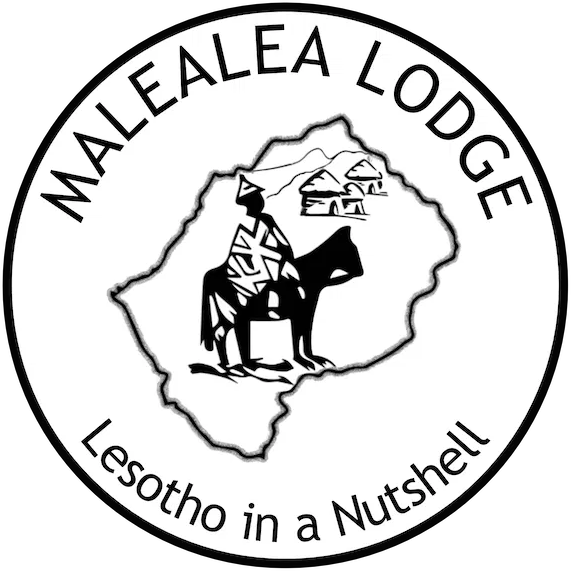

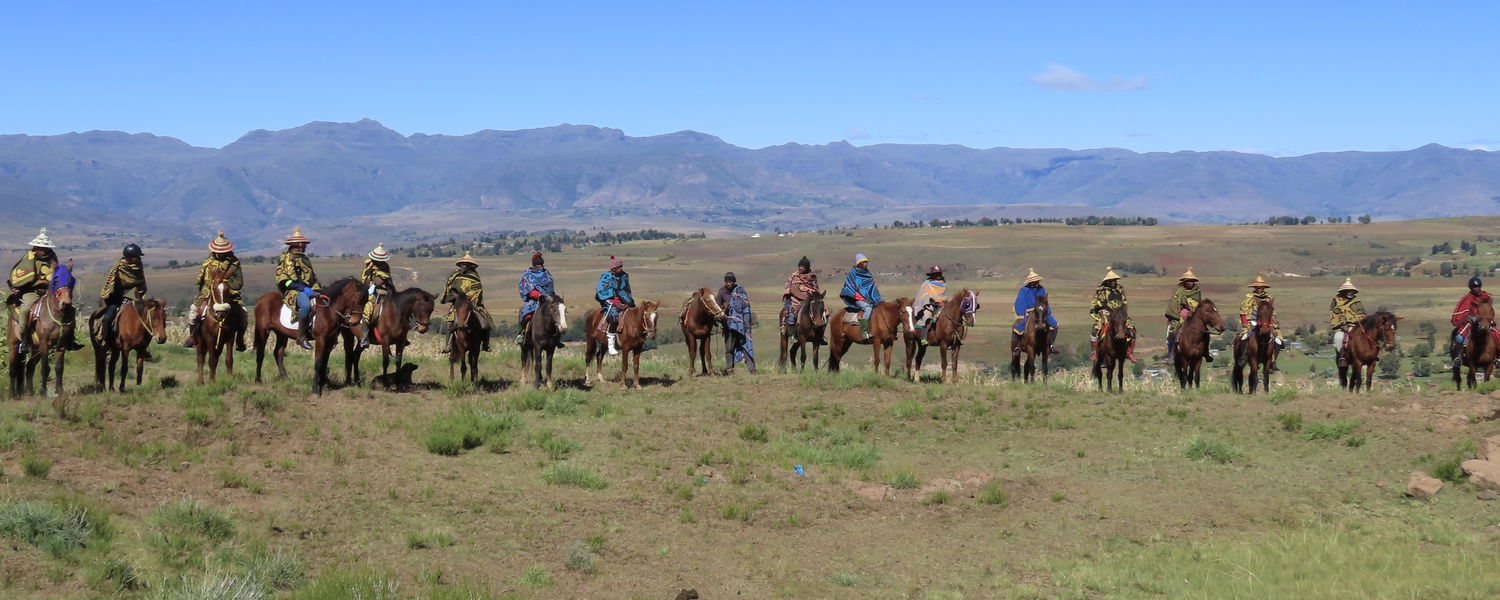
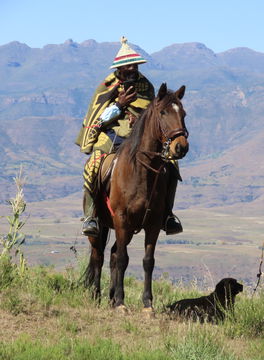
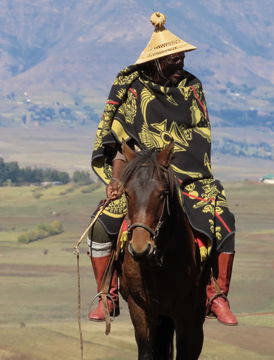
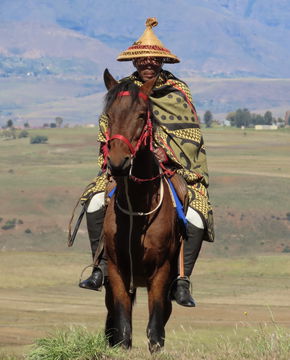
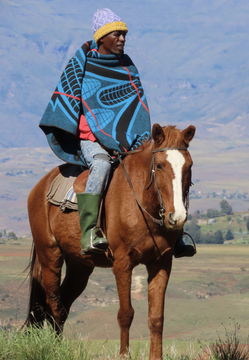
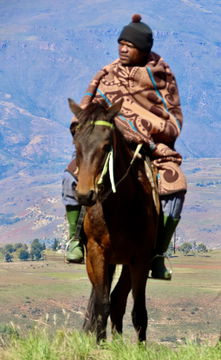
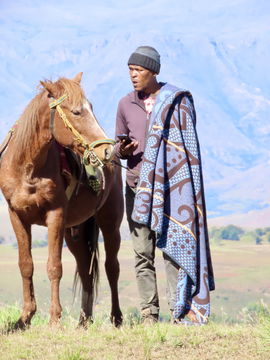
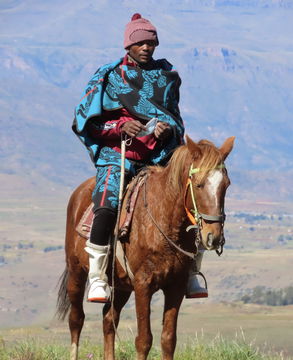
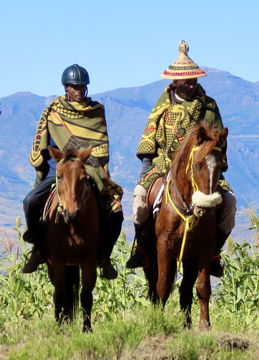
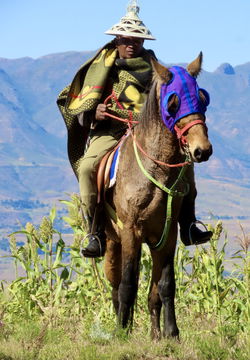
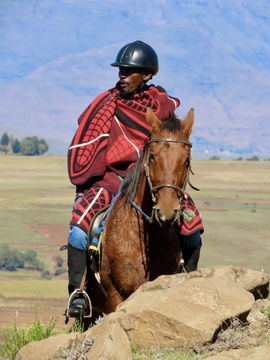
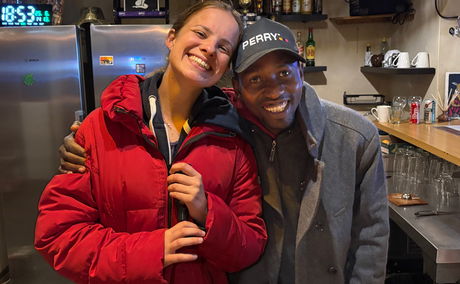


Share This Post